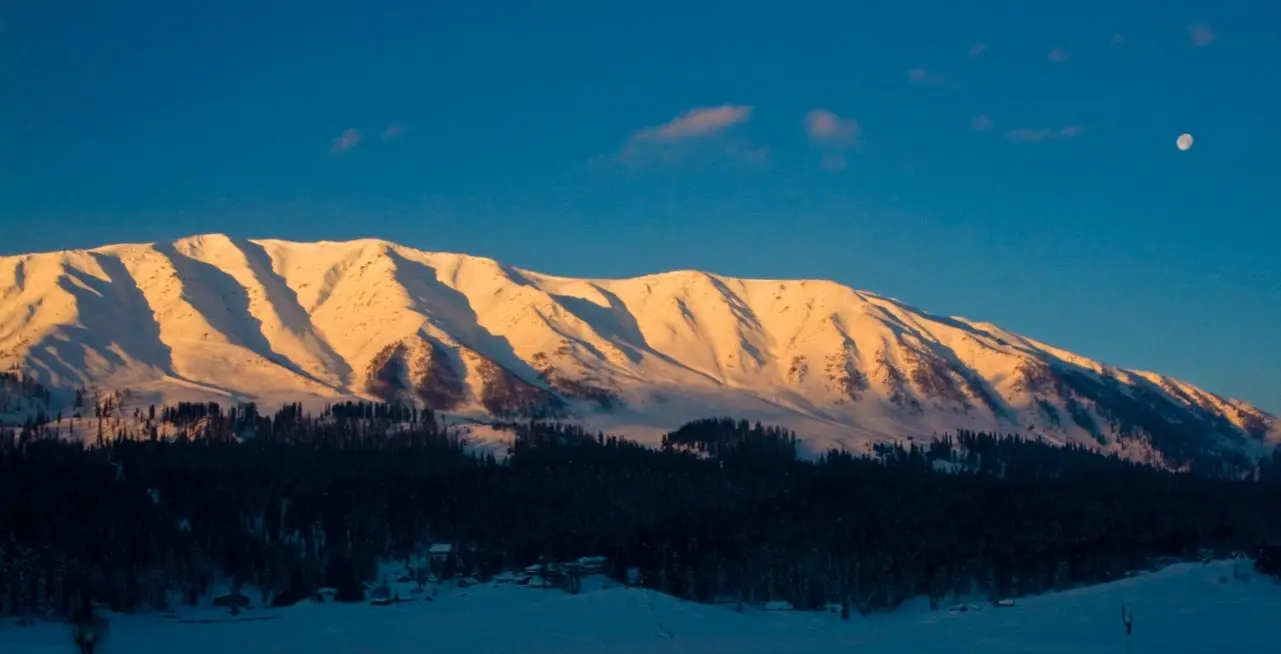
The most complete website about Gulmarg Ski Resort
About Srinagar — Things to Know — To do
Skiers going to Gulmarg Ski Resort often arrive in Srinagar by air and then travel by car to Gulmarg. Travelers should not be too alarmed when they see armed soldiers on the city's streets as Srinagar is much safer since 2003. They'll also notice lots of vacant, oversized houses (by Kashmiri standards) that are protected by barbed wire. The houses were built when tourism in Kashmir was skyrocketing but are now used by military personnel or homeless people.
The summer is a popular time for tourists to visit Srinagar because of its mild weather. Tourists should bring warm clothing during the winter as the area gets a large amount of snowfall. Hot water can be scarce at some accommodations during the colder months.
A Brief History of Srinagar
Srinagar is the capital of the Indian state of Jammu and Kashmir.
Srinagar's history dates back to the 3rd century BC. It was founded by King Pravarasena II over 2,000 years ago and was part of the Maurya Empire, one of the largest empires of the Indian subcontinent.
Srinagar became the capital of Kashmir around 960 AD and was under independent Hindu and Buddhist rule until the 14th century, when the Kashmir valley (including Srinagar) came under the control of several Muslim rulers, including the Mughals.
After the disintegration of the Mughal Empire in the early 1700s, the Durrani Empire ruled the city for several decades. In 1814, the city came under the influence of the Sikhs. In 1846, the Treaty of Lahore was signed by the Sikh rulers and the British in Lahore, giving the British rule over the Kashmir Valley until 1947.
After India and Pakistan's independence from Britain, certain Pakistani tribes entered the Kashmir valley to capture it. The Maharaja signed an instrument of accession in 1947, which was accepted by India the next day. The government of India airlifted troops to Srinagar, defended the city and drove away the invaders.
The city is still heavily militarized as it has suffered severe political and terrorist unrest during the last few decades as Kashmiri separatists have clashed with the Indian Army on some occasions.
Srinagar's Geography and Demographics
Srinagar is located in the Kashmir Valley on both sides of the Jhelum River, which passes through the city and empties into Dal Lake. The city is also famous for its 9 old bridges, which connect the 2 parts of the city.
It's 52 kilometers from Srinagar to Gulmarg, and many travelers pass through Srinagar on their way to Ski this Himalaya resort.
As of the 2011 census, Srinagar's population was 1,192,792. The languages spoken are mainly Kashmiri, Urdu, and English. Muslims make up more than 97% of the population. Hindus account for 2% of the population while Sikhs and others make up 1% of the population.
See & Do in Srinagar
Srinagar has been called the "Venice of the East" — it's known for its beautiful lakes and houseboats.
The city is also known for its beautiful gardens, and the terraced lawns and cascading fountains of the 3 Mughal Gardens are a must see for visitors. The Nehru Garden and nearby Tulip Garden are also worth a visit.
Pari Marhal offers spectacular views of Srinagar with backdrops of the majestic, snow-clad Himalayan Mountains.
The Hazratbal Mosque is a beautiful white mosque adjacent to a market area that sells fresh food. The Shankaracharya Mandir, a Hindu temple situated on a hilltop, is reached by climbing 250 steps.
Srinagar is surrounded by beautiful lakes like Dal Lake and tree-lined Nagin Lake. Visitors can rent a shikara (wooden taxi boat) and ride along the twisting waterways of Dal Lake. Be sure to take a ride to the "village" on the lake to see the floating vegetable markets.
About the Dal Lake and the Famous Srinagar's Houseboat
Dal Lake is the center of tourism and recreation in Kashmir. Nicknamed the "Jewel in the crown of Kashmir," the lake spreads across 26 square kilometers and is home to Srinagar's Houseboats.
These famous houseboats are nicknamed "floating palaces" and are made from local cedar wood. Most of them have lavishly furnished rooms, complete with verandas and a terrace to serve as a sun deck and enjoy evening cocktails. The houseboats are anchored individually with interconnecting bridges to provide access from one boat to another. Each houseboat has a shikara to ferry guests to shore.
Great Shopping Deals in Srinagar
Srinagar is known for indigenous crafts like hand-woven silks and embroidered shawls. Cashmere and pashmina shawls have been manufactured in Kashmir for thousands of years and are very popular items. Costs vary depending on the grade of Pashmina wool and whether they are machine woven or hand woven.
Other popular items are embroidered felt mats called Namdahs, which are made of brightly-colored wool, carpets, and paper mache products made with colorful motifs and designs.
Leather products and jewelry (especially gems like turquoise and silver jewelry) are other great shopping deals in Srinagar.
Kashmir produces some of the best Saffron in the world. It's a great item to bring home as it takes up very little space in your suitcase. For cricket fans, don't leave without a hand-crafted cricket bat made of Kashmir willow.